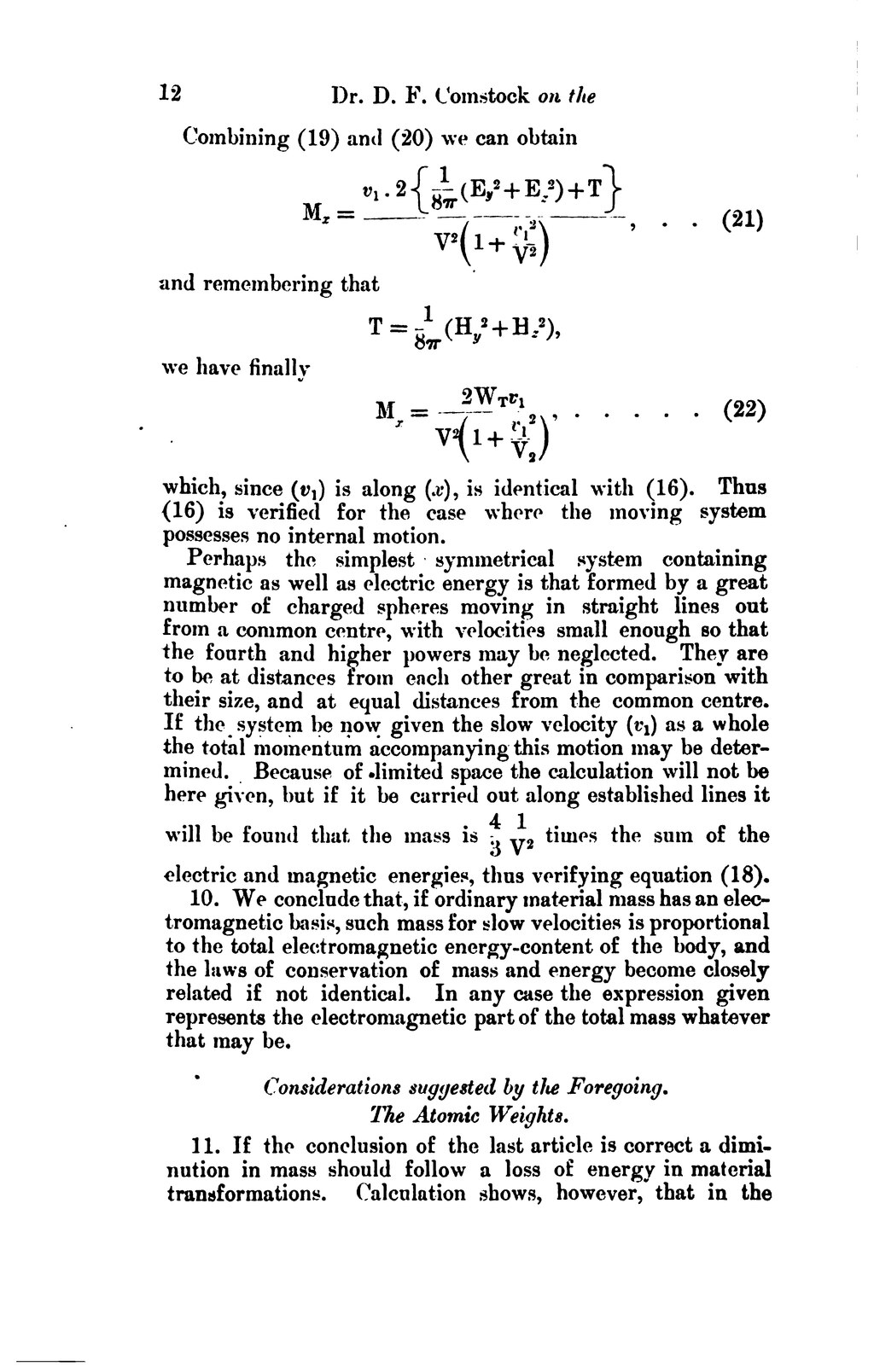Combining (19) and (20) we can obtain
| (21) |
and remembering that
we have finally
| (22) |
which, since () is along (), is identical with (16). Thus (16) is verified for the case where the moving system possesses no internal motion.
Perhaps the simplest symmetrical system containing magnetic as well as electric energy is that formed by a great, number of charged spheres moving in straight lines out from a common centre, with velocities small enough so that the fourth and higher powers may be neglected. They are to he at distances from each other great in comparison with their size, and at equal distances from the common centre. If the system be now given the slow velocity () as a whole the total momentum accompanying this motion may be determined. Because of limited space the calculation will not be here given, but if it be carried out along established lines it will be found that the mass is times the sum of the electric and magnetic energies, thus verifying equation (18).
10. We conclude that, if ordinary material mass has an electromagnetic basis, such mass for slow velocities is proportional to the total electromagnetic energy-content of the body, and the laws of conservation of mass and energy become closely related if not identical. In any case the expression given represents the electromagnetic part of the total mass whatever that may be.
Considerations suggested by the Foregoing.
The Atomic Weights.
11. If the conclusion of the last article is correct a diminution in mass should follow a loss of energy in material transformations. Calculation shows, however, that in the






